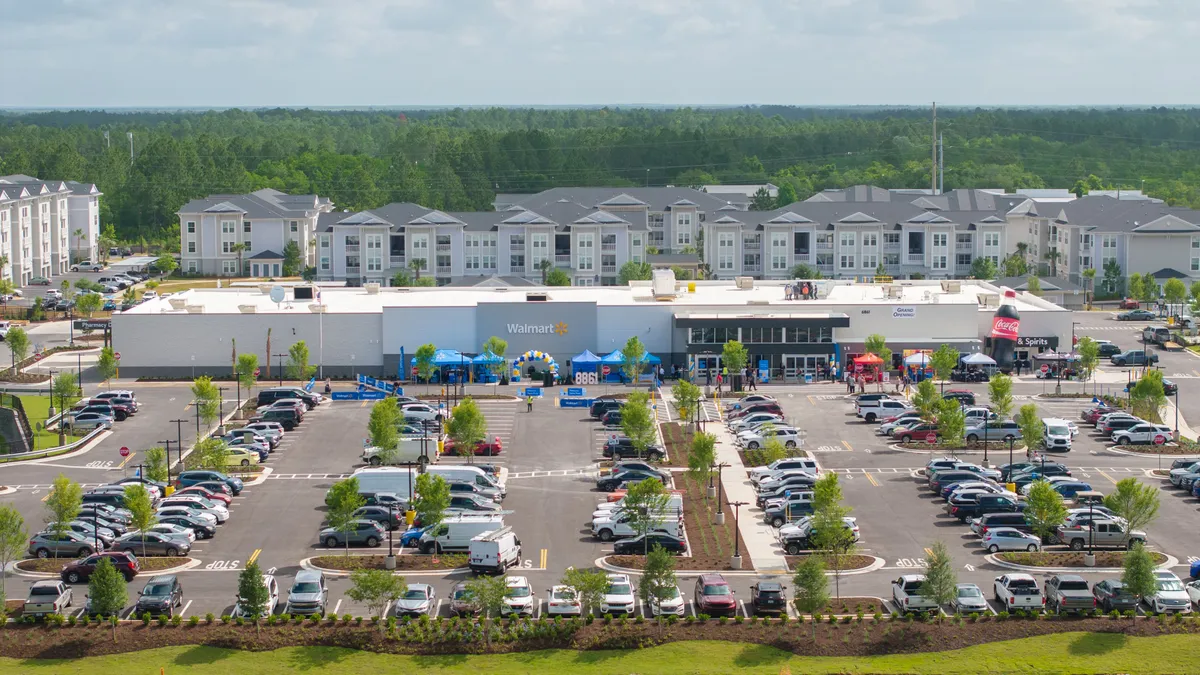Quick Facts
Amazon-Whole Foods deal
-
Deal Worth:
$13.7B
-
Deal closed:
August 28
-
Physical stores involved:
460
CEOs involved:
Jeff Bezos (Amazon), John Mackey (Whole Foods)
Sales of Whole Foods store brands on Amazon:
$1.6B in September
Increase in store traffic once the deal went through:
25%
Few people saw it coming. But after the news of Amazon’s $13.7 billion acquisition of Whole Foods broke on the morning of June 15, industry observers seemed to be unanimous in praising the bombshell deal.
Why? Because Amazon, despite its prowess in so many other retail categories, had up until that point failed to make inroads in grocery. Its AmazonFresh delivery business had rolled out to just a handful of cities in the 10 years since its launch. Its Prime Now service wasn’t making established retailers break a sweat, either.
Amazon’s biggest problem was lack of infrastructure, including pricey cold-storage facilities needed to hold fresh inventory. Despite its innovative spirit and enormous capital expenditures budget, the e-tailer couldn’t overcome the difficult economics of home delivery. By acquiring Whole Foods, however, Amazon gained a vital distribution network, including 460 stores that could serve as delivery hubs for Amazon’s e-commerce offerings, be that Fresh or some other service developed by the company.
In addition, Amazon scored a network of physical stores that help it complete the modern grocery equation. Despite the growth of online shopping and projections that sales may hit $100 billion within several years’ time, the fact remains that most consumers still prefer to buy their fresh produce, sliced meats and prepared foods at the store.
“If [Amazon] is going to be a significant player in the grocery space, they have to attack the industry with a combination of online as well as brick and mortar,” Neil Stern, a senior partner at retail consulting firm McMillanDoolittle, told Food Dive.
The road won’t be a smooth one for Amazon. Whole Foods is a troubled retailer, for starters. The natural and organic grocer has numerous operational inefficiencies, including some of the highest costs per square foot of any supermarket in the country. Whole Foods also suffers from a “Whole Paycheck” pricing image that has dogged it for years.
To address the pricing issue, Amazon introduced sweeping price cuts on the day it assumed ownership of Whole Foods, August 28. This included as much as 40% off on many staple goods and fresh items. The move increased store traffic by 25%, according to location data from Foursquare, and took sales away from rivals like Trader Joe’s, Kroger and Sprouts Farmers Market. But follow-up reports note the cuts haven’t had much impact on Whole Foods’ average prices.
By the numbers
Price reduction on organic gala apples, measured at the chain’s Upper East Side location in New York City.
Foot traffic increase Whole Foods saw in its first week under Amazon’s ownership
Trader Joe’s customers' rate of defection to Whole Foods
Average overall price reduction
Likewise, Amazon is currently overseeing a transition of Whole Foods' buying operations from a regional and store-focused model to one centered on the chain's Austin, Texas headquarters. Critics point out that this will result in fewer niche and local brands, though Whole Foods maintains it is committed to local products and suppliers.
Amazon’s problems with Whole Foods could run even deeper. The two companies have divergent corporate cultures. Amazon is known for its driven and demanding corporate culture, while Whole Foods is known for being more nurturing and values-focused. Observers noted the potential for friction between the two, and it appears that’s starting to unfold. At an industry conference in San Antonio this fall, Whole Foods CEO John Mackey said executives from both teams would attend a retreat together "to figure out how to reconcile our purpose with Amazon's higher purpose."
Issues aside, Amazon remains a major threat to the grocery industry. Amazon also started selling Whole Foods' private label brands on its site, adding up to $1.6 million worth of 365 and others in September. Signs also point to the e-tailer implementing a very aggressive e-commerce solution. During Amazon’s recent earnings call, CFO Brian Olsavsky indicated the company plans to use Whole Foods as part of an integrated grocery platform that incorporates online and offline selling
"There will be a lot of work together between Prime Now, AmazonFresh, Whole Foods, Whole Foods products on the Amazon site, Amazon Lockers at the Whole Foods stores," he said. "So, there will be a lot of integration, a lot of touch points and a lot of working together as we go forward."
Although Amazon CEO Jeff Bezos has stated he doesn't want to mess with the Whole Foods brand, many see big changes ahead for the natural and organic retailer. Whether these changes will result in the industry disruption so many fear is up for debate. But no one can dispute the impact the deal has had on the industry, with grocery stocks still down across companies.
In all likelihood, the deal will continue to impact all of grocery for years to come.
“In Amazon, you have this competitor who can reimagine the store in ways the old physical-first stores cannot,” Michelle Grant, head of retailing at Euromonitor International, recently told Food Dive.
Looking Forward
Amazon and Whole Foods will roll out new synergies as time goes on. Look for special deals and coupons for Amazon Prime members, price promotions either in store or online, and many new ideas to revamp omnichannel shopping.









